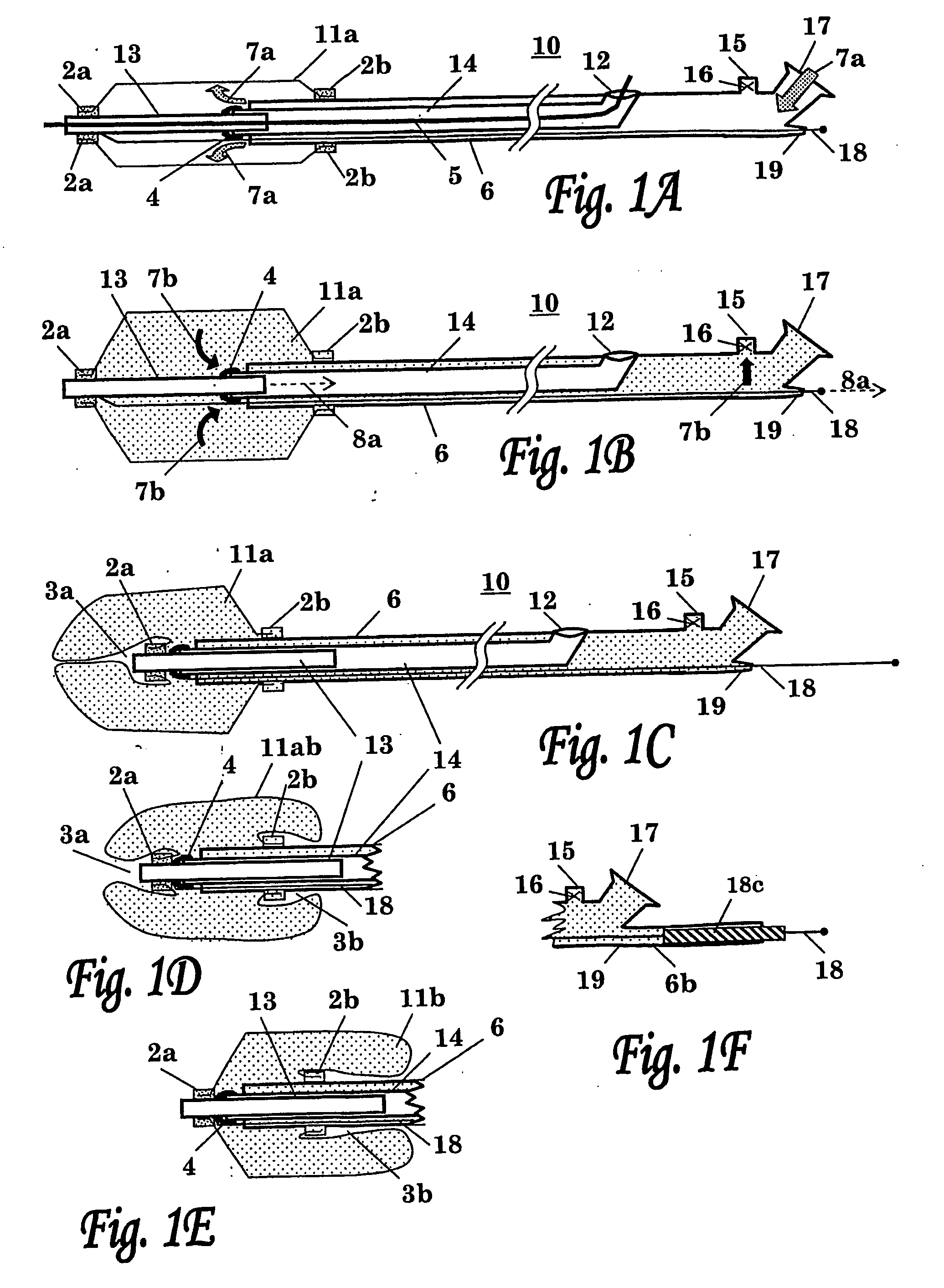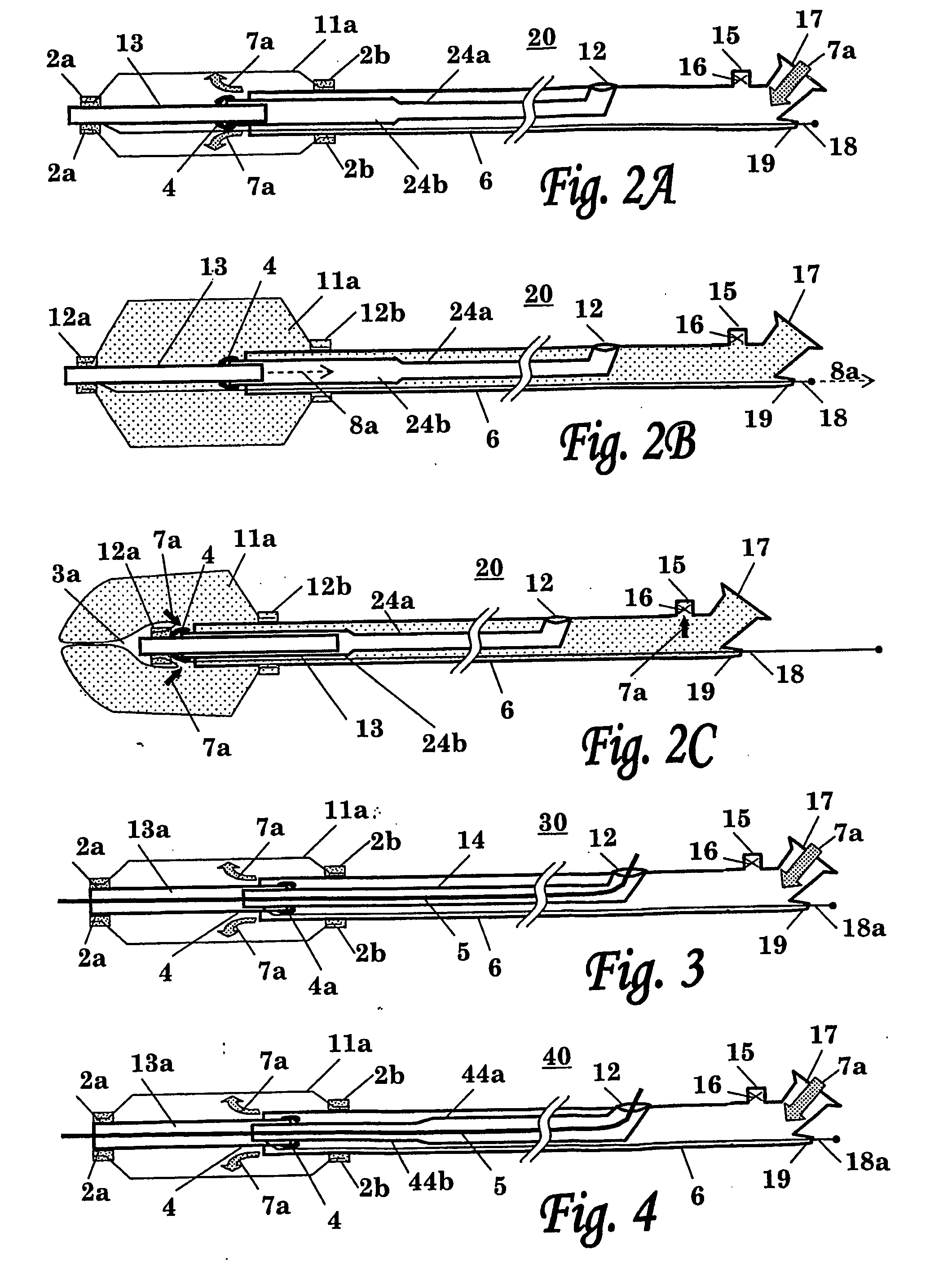Balloon Catheter
a balloon catheter and balloon technology, applied in balloon catheters, other medical devices, surgery, etc., can solve the problems of preventing designers from developing new rapid exchange catheter implementations and their implementations are relatively restricted, and achieve the effect of facilitating the mutual sliding of various conduits
- Summary
- Abstract
- Description
- Claims
- Application Information
AI Technical Summary
Benefits of technology
Problems solved by technology
Method used
Image
Examples
example 1
Finite Element Analysis (FEA) of a Debris-Collecting Balloon for Use in the Present Invention
[0125]FEA is a computerized tool which was used to optimize the balloon design in order to improve its ability to fold in the desired way. The FE model describes an inflated balloon which edge is retracted, resulting in folding of the balloon. The simulation was performed on different balloon designs and at varied inflation pressures, taking into account the mechanical properties of the balloon material, which was chosen to be nylon 12 or pebax.
Assumptions:
[0126]i. The balloon is made of a homogenous and isotropic material.
ii. The balloon's shape is symmetrical around its longitudinal axis.
iii. The balloon's shape is symmetrical around its mid transverse axis.
iv. The folding results in flexural stresses in the balloon material. Thus the mechanical properties (Modulus and Poisson Ratio) of the substance when flexed are taken into account in the FE analyses.
Methods:
[0127]a) The analyses were p...
example 2
Determination of the Force that is Required in Order to Fold the Balloon at Different Inflation Pressure
Equipment and Materials:
3.0 mm Nylon 12 Vestamid L2101F Balloon (Interface Associates 316079-1)
[0135]Glass tube with inner diameter of 3 mm.
Guidant HI-TORQUE CROSS-IT 200XT 0.014″ Guidewire.
[0136]Hounsfield Test Equipment Model TX0927, 50-N load cell. This computer controlled testing machine enables determining tension, compression, shear, flexure and other mechanical and physical properties of materials. The machine provides selection of test speeds and direction of travel. It can measure the force and displacement values and can also graphically display the test.
Assouline Compressor type 1.5 HP.
Fluid dispensing system Model 1500XL.
Procedure:
[0137]The balloon was inserted into a 3-mm glass tube, at straight position or inclined to 45°. A guidewire was inserted into the inner tube in order to stabilize the folding motion. The balloon was inflated using a compressor and the inflati...
PUM
 Login to View More
Login to View More Abstract
Description
Claims
Application Information
 Login to View More
Login to View More - R&D
- Intellectual Property
- Life Sciences
- Materials
- Tech Scout
- Unparalleled Data Quality
- Higher Quality Content
- 60% Fewer Hallucinations
Browse by: Latest US Patents, China's latest patents, Technical Efficacy Thesaurus, Application Domain, Technology Topic, Popular Technical Reports.
© 2025 PatSnap. All rights reserved.Legal|Privacy policy|Modern Slavery Act Transparency Statement|Sitemap|About US| Contact US: help@patsnap.com



